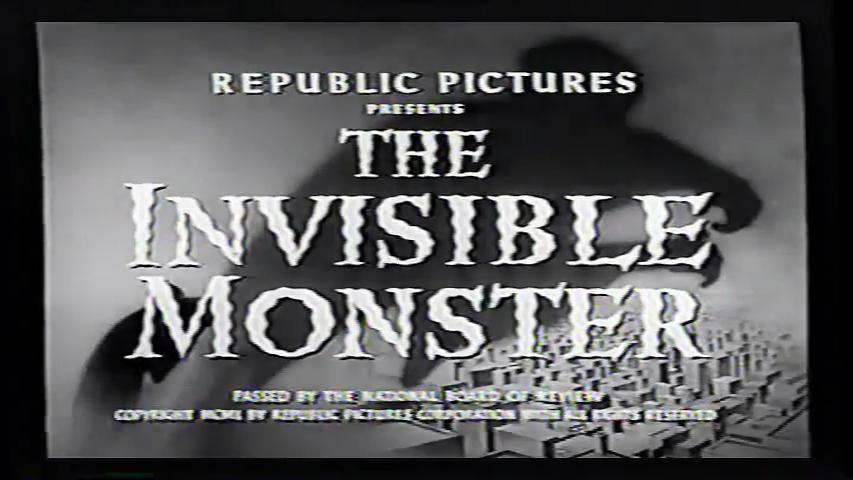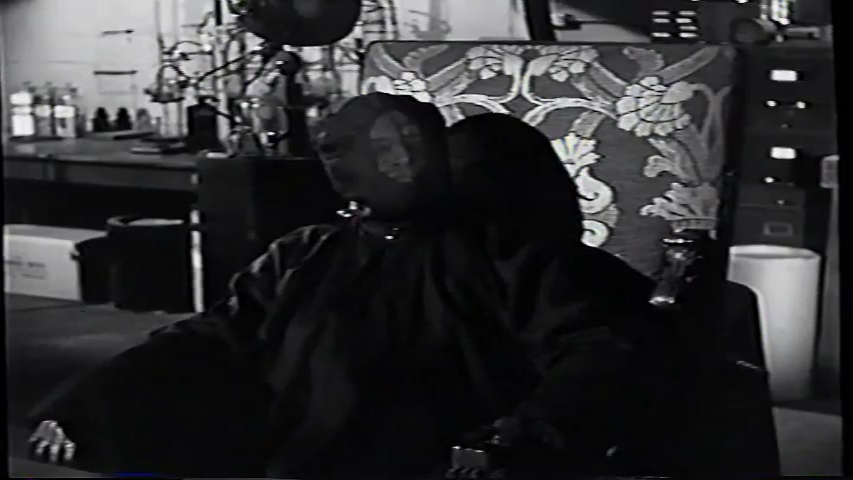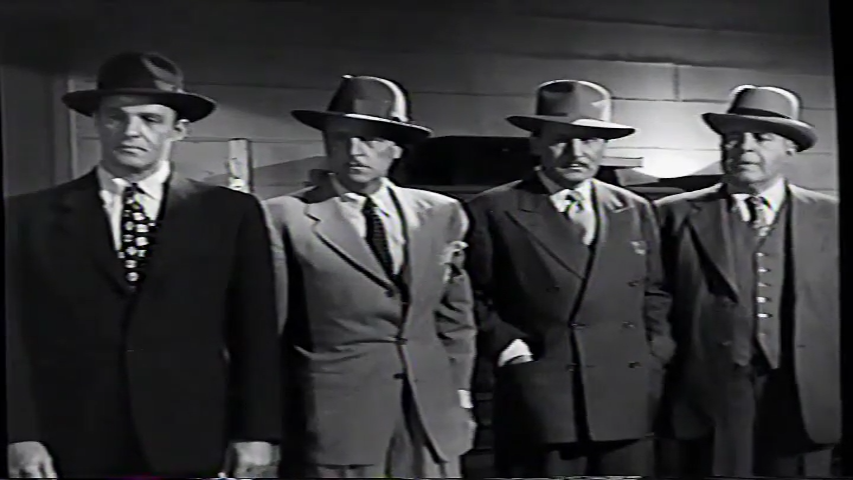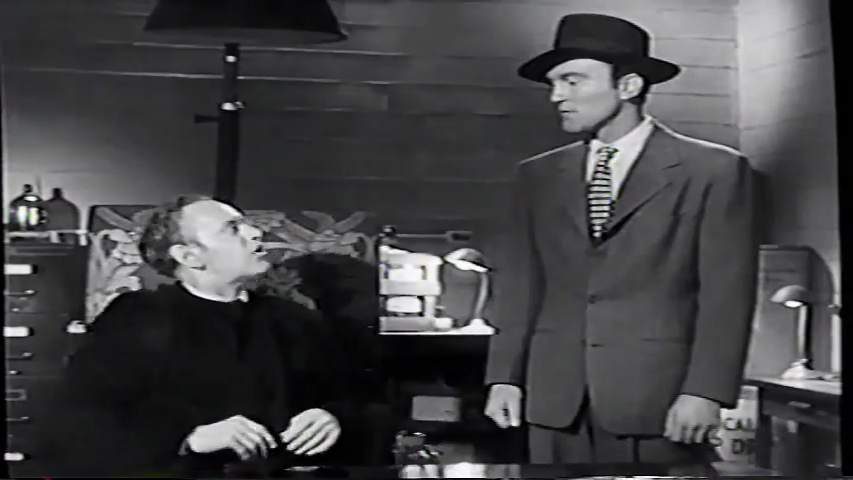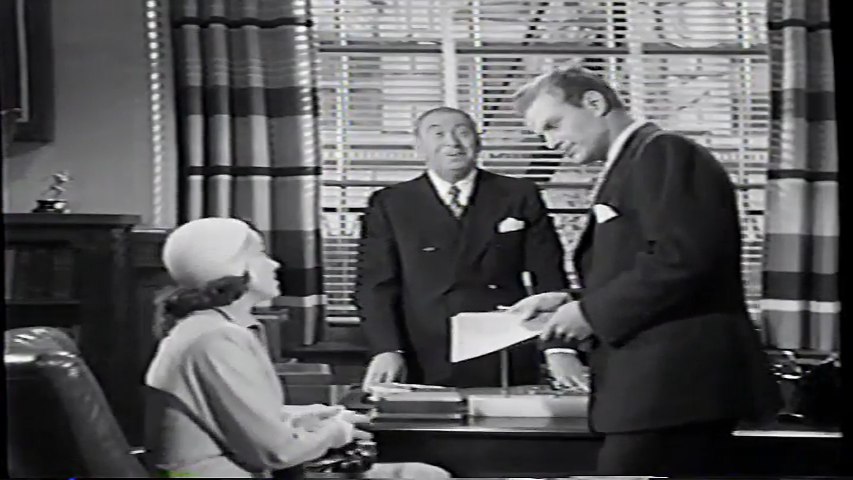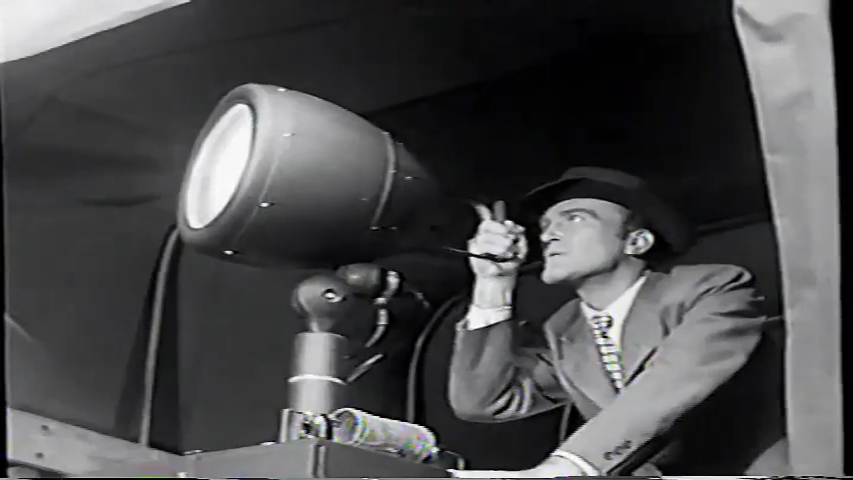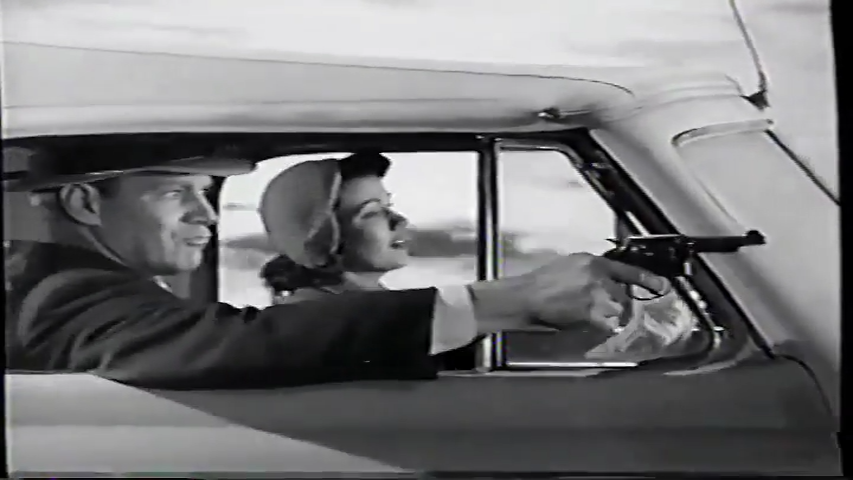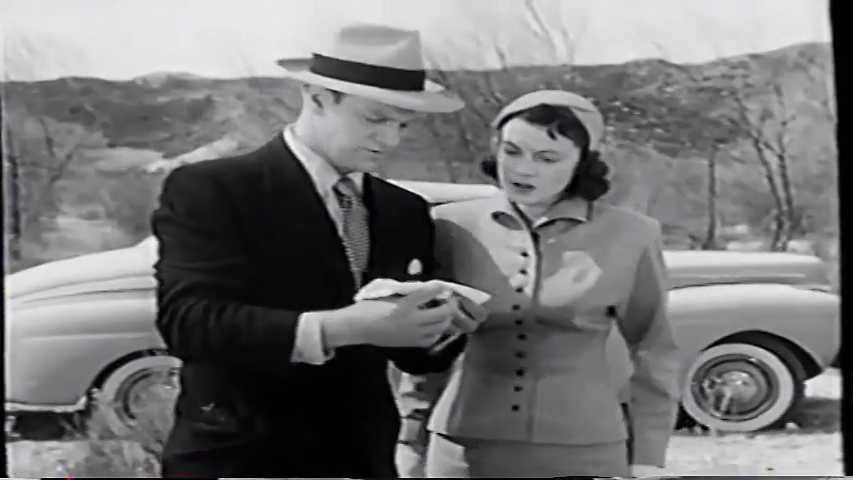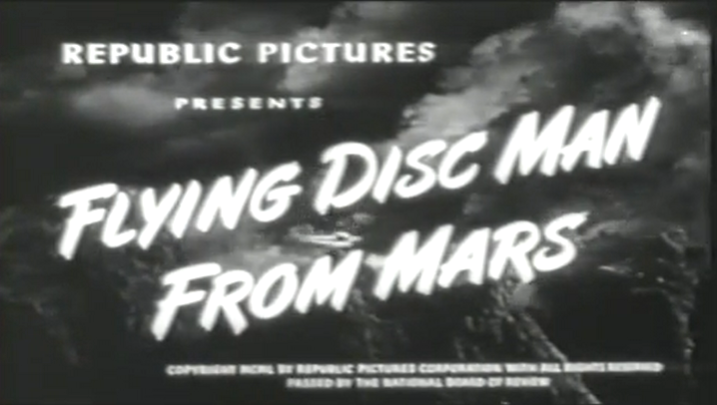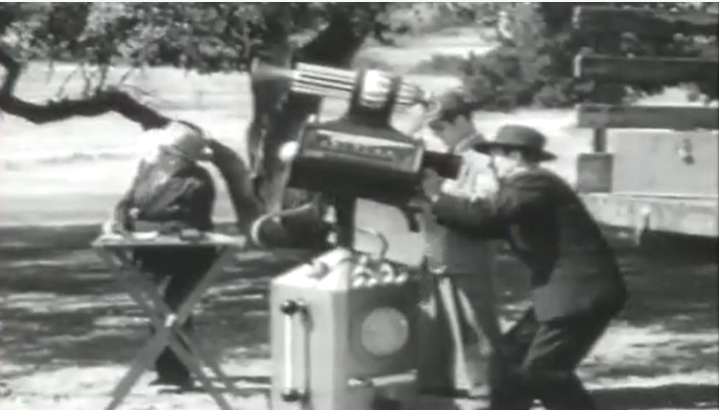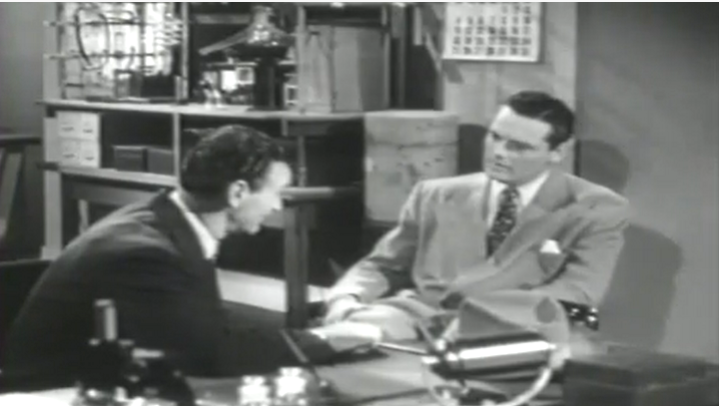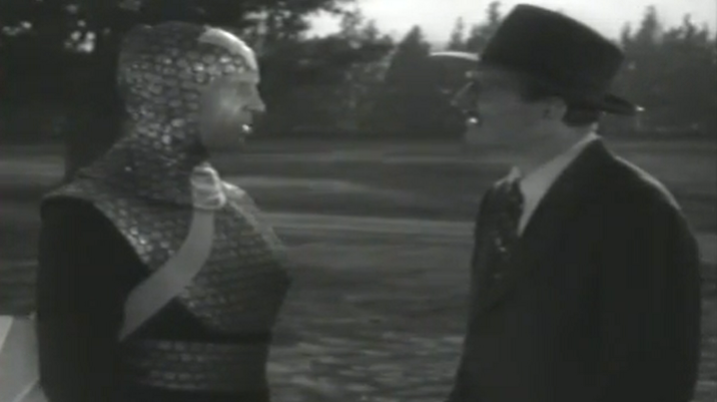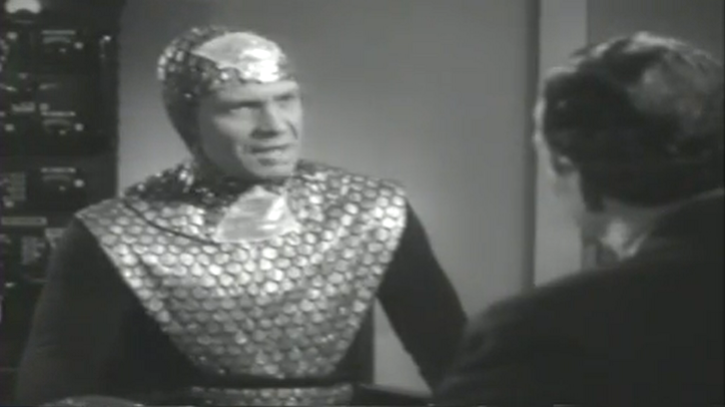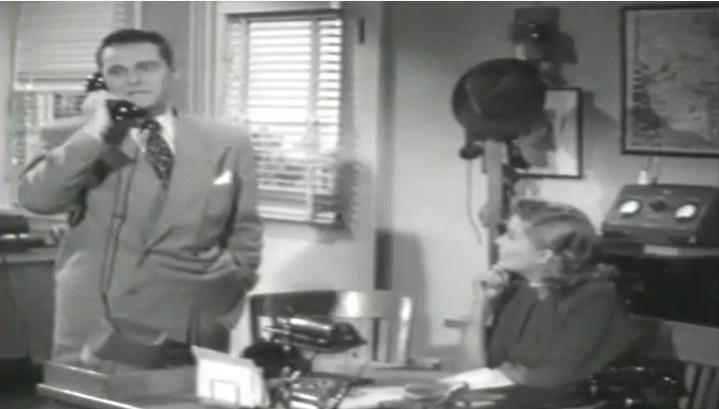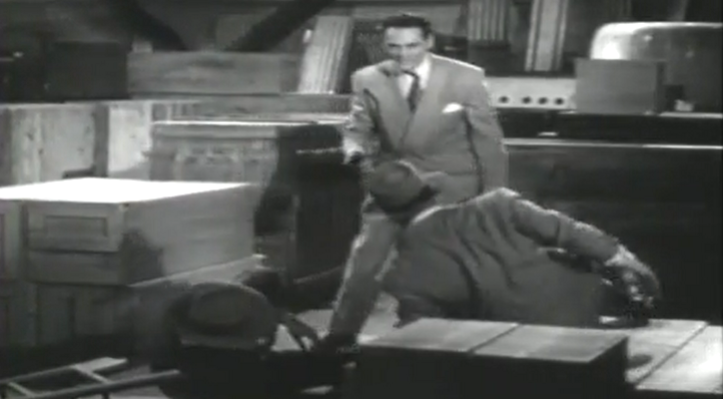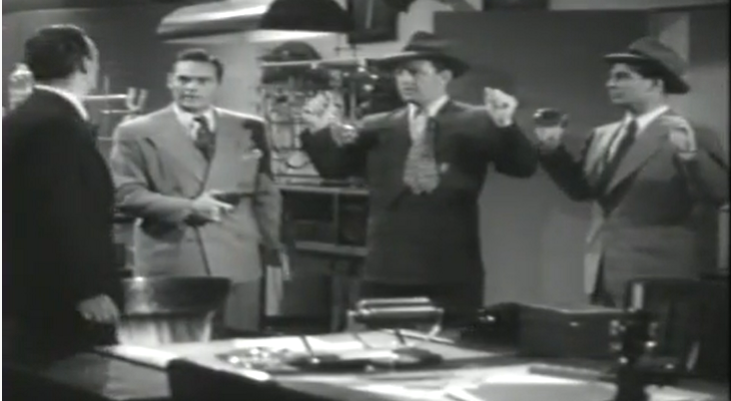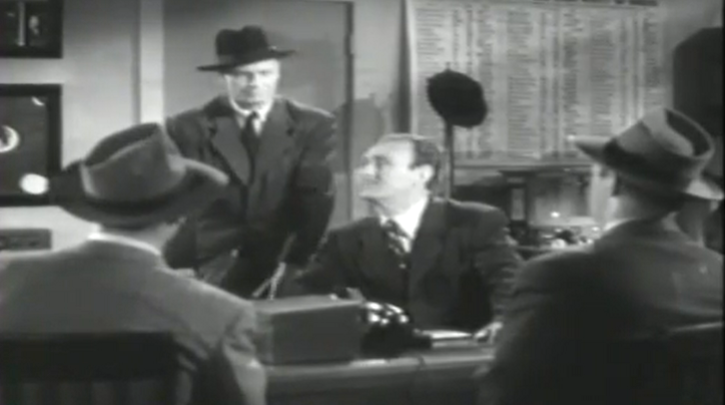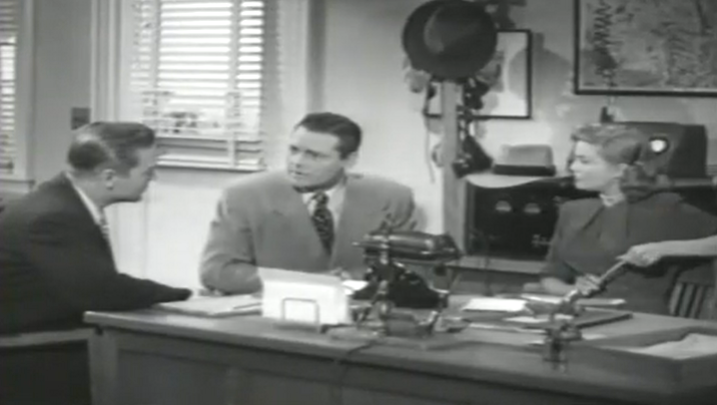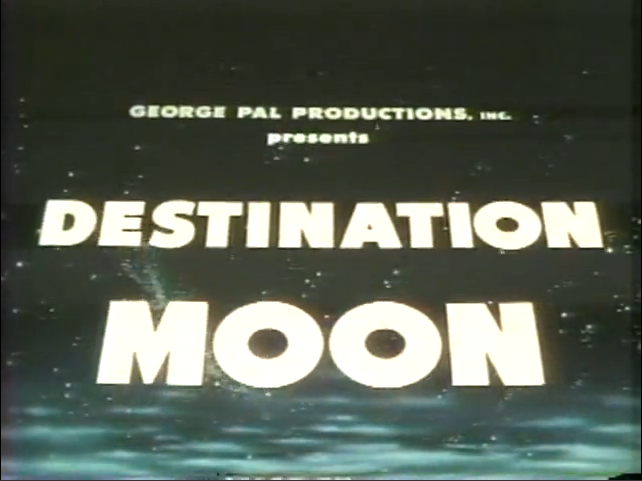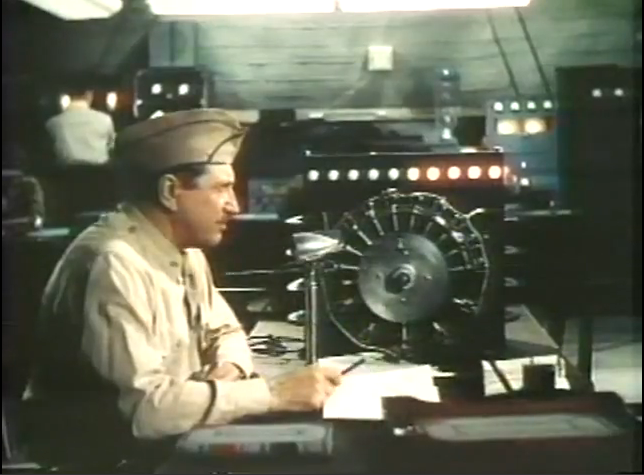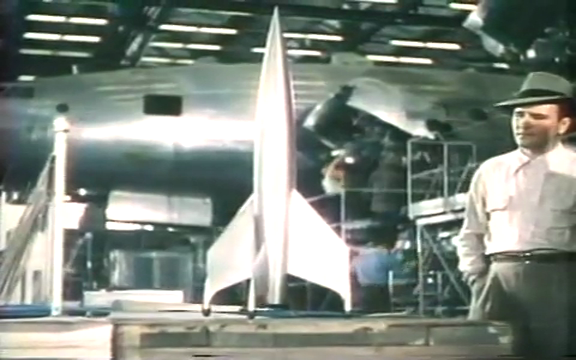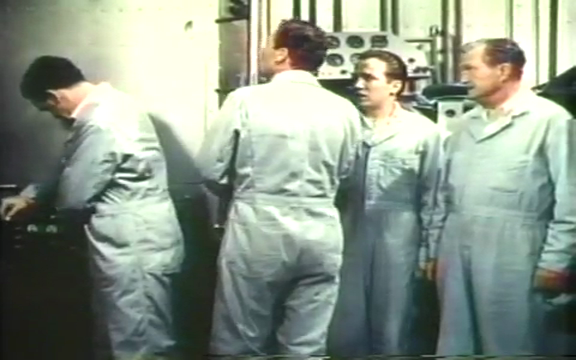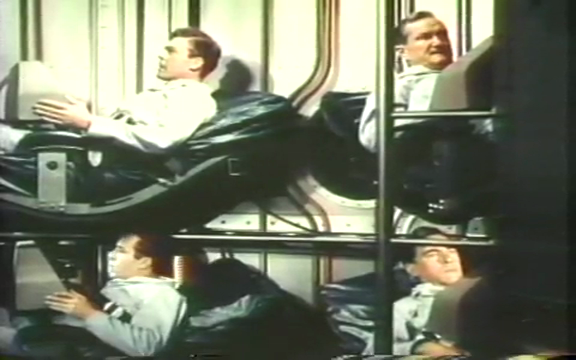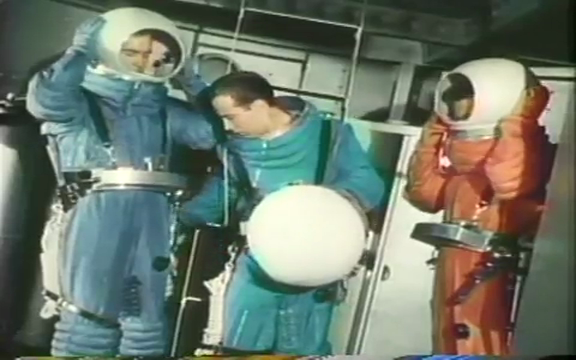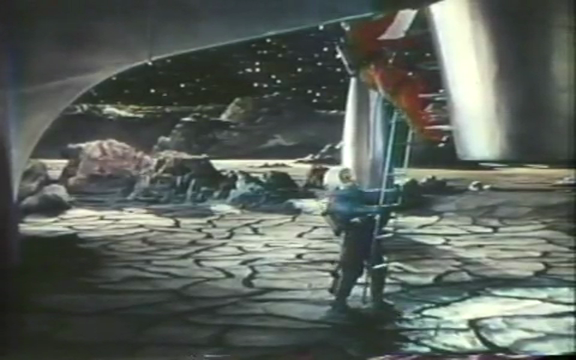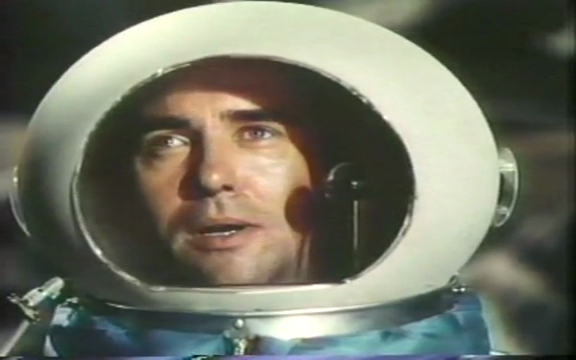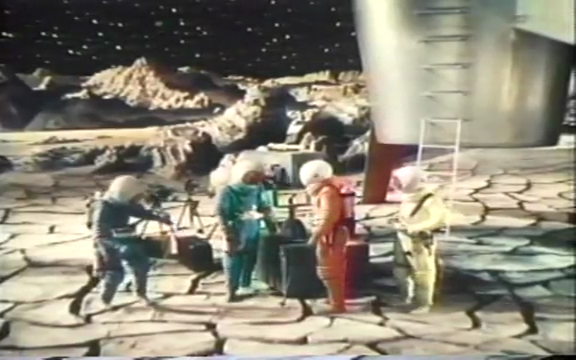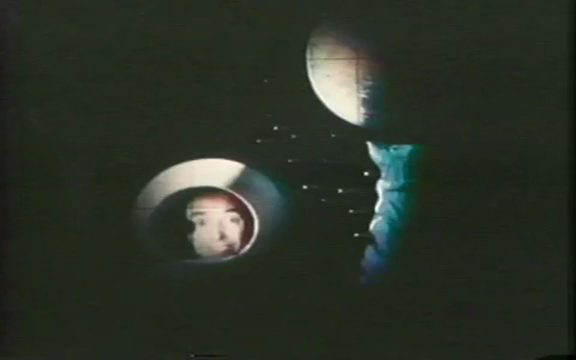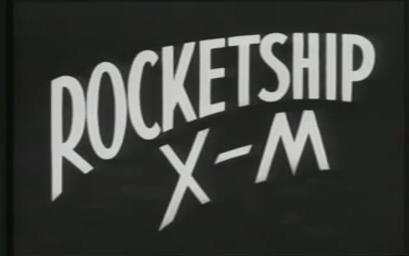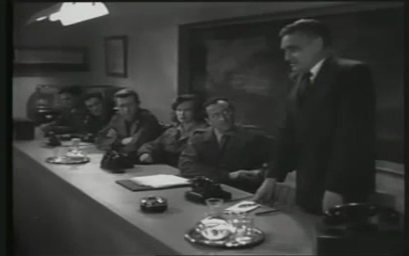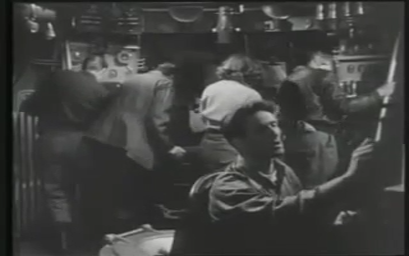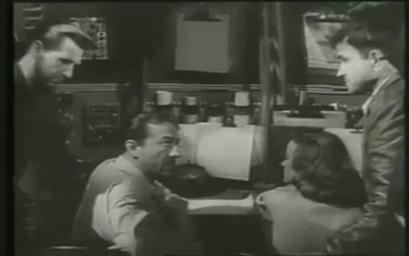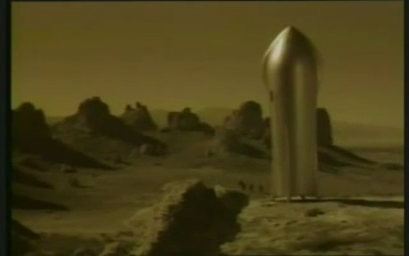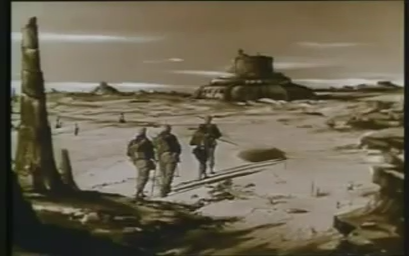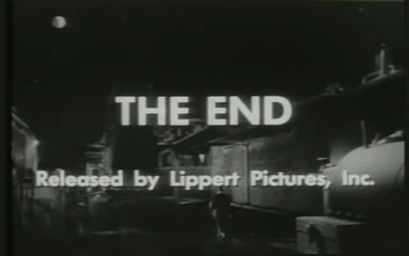-
#437 – The Invisible Monster (1950)
The Invisible Monster (1950)
Film review #437
Director: Fred C. Brannon
SYNOPSIS: A criminal known only as the “phantom Ruler” has devised a way to turn invisible by covering his clothing in a special chemical and remaining under a specific light source. He coaxes some men who have illegally entered the country to be his underlings, setting them up in various jobs to sabotage security and such in order to commit crimes. Insurance agent Lane Carson is tasked with investigating the incidents, alongside his new assistant Carol Richards, and stopping the Phantom Ruler from getting the necessary materials for creating an invisible army…
THOUGHTS/ANALYSIS: The Invisible Monster is a 1950 serial by Republic Pictures comprised of twelve chapters. The story is a familiar one to serial-watchers, as insurance investigator Chase Lane is assigned to stop a series of crimes committed by “The Phantom Ruler” before he can build an invisible army. The structure is pretty similar to every other serial of the time, but the specifics of the plot are fairly ridiculous and without logic. The trope of invisibility has been overused in serials (particularly by 1950 when this serial was released), but this serial invents such an incomprehensible and overly complicated logic for the trope that it renders the whole setup unconvincing: The Phantom Ruler has discovered a chemical that can turn whatever is covered in it invisible, but only when a specific type of light is shined upon it. This means that in order to turn invisible, The Phantom Ruler has to cover his robe in it, and have a spotlight shined on him whenever he wants to be invisible. This leads to some ridiculous scenes where he goes out to do things while invisible, but one of his underlings is hanging out the back of a van with a huge spotlight shining on him to keep him invisible. Luckily there’s no one about when he does these things, otherwise the presence of a man moving a spotlight around in the middle of the day might be a little suspicious. We see the spotlight move across the scenes to signify where the Phantom Ruler is, so if anyone can see the spotlight, they will surely be suspicious about anything happening within it. I’m also not sure if the visible spotlight is for the viewers benefit, or if the characters themselves can actually see it. Either way, the overly-complicated mechanisms are pretty ridiculous, and really stifle any possibilities that could arise from the use of invisibility. Aside from this, there’s the usual car chases, fist fights and shoot-outs you would expect, although they are rather predictable.
The cast is fairly small, and rather unremarkable. Chase Lane is the typical serial lead (despite the untypical name) and Carol Richards pays the token female, although as an “assistant” she does actually have things to do, and gets involved in the car chases, and shootouts etc. which would typically be done by another young male “sidekick” character. The villain gets a surprising amount of screentime too, as his invisibility trick is the only stand-out part of this serial, so we get a fair amount of focus on seeing him carry out his crimes…or not carry them out, since he’s invisible and all. We’re never given his name or any information about him other than he wants to make an invisible army to take over the city/country…which also seems a bit of an issue; where is he going to find a spotlight big enough to conceal an entire army? Nothing about this scheme makes sense. Anyway, seeing the villain do most of the criminal work is a bit different than the usual types who stay hidden and get their henchmen to do their dirty work. The Phantom Ruler’s henchmen are given a bit of motive, in that they are immigrants who have illegally entered the country, and The Phantom blackmails them to do his bidding lest he turn the over to the authorities. A small detail, but one more than is usually given in these serials.
Serials such as this usually have a very quick turn-around, with the whole thing being filmed in less than a month. The Invisible Monster feels like it was hastily put together even by serial standards. It is only twelve chapters long (which is the standard minimum number), but the chapters each run at just over thirteen minutes, and when you take out the title sequence and the re-used footage from the previous chapter to resolve the cliffhanger, that goes down to about eleven minutes, which if you had to go to the theatre every week to see each new chapter just for eleven minutes, it wouldn’t really be worth the effort. Also chapter ten is a “recap” chapter which just recaps the story using mostly previous footage, cutting down even further the material produced. The cliffhangers themselves are nothing special, and are very predictable, and the use of model cars going over cliffs is blatantly obvious. The acting is alright, but the scripting and dialogue is bad in the sense that there’s a lot of people explaining what the current situation is instead of showing it (this was typically used for the benefit of viewers who had not watched previous chapters), and also the traps and schemes the characters fall into are so blatant it makes everyone seem naïve and without any thought processes whatsoever, rendering them as mindless cut-outs explaining what they are doing instead of actually doing it. Overall, The Invisible Monster is a dull serial released past the peak of the format, and offering little to viewers. It’s hasty production skips out on making anything interesting, and the whole invisibility plot device is completely non-sensical and fails to stand up to any sort of logic. Even if you’re a serial fan, it’s not worth your time.
-
#398 – Flying Disc Man from Mars (1950)
Flying Disc Man from Mars (1950)
Film review #398
Director: Fred C. Brannon
SYNOPSIS: Scientist Dr. Bryant goes to investigate a strange aircraft that has has crashed to Earth. There, he finds that a Man named Mato who has come from Mars with the aim of placing the Earth under Mars’ absolute dictatorship. He blackmails Dr. Bryant in this scheme, knowing about his secret past as a Nazi scientist during the war, into using his scientific knowledge and resources to construct weapons to achieve this task. Meanwhile, Kent Fowler, who owns a security company that uses planes, and who was also hired by Bryant to act as security around his factory before the ship crashed, must find a way to the criminal’s plans to steal the components necessary to build atomic weaponry.
THOUGHTS/ANALYSIS: Flying Disc Man from Mars is a 1950 movie serial composed of twelve chapters. The first chapter opens up strongly (as they all do in order to get viewers into the theatre and subsequently back for the remaining chapters), as Dr. Bryant, a scientist and owner of a manufacturing company, hires Kent Fowler, the owner of security company that patrols in a fleet of aeroplanes, to patrol the grounds of his factory, as there have been sightings of strange ships in the sky recently. Bryant sees a ship fall out of the sky and crash nearby, prompting him to go and investigate. When he arrives, he finds a man emerge from the plane called Mato, who claims to be from Mars and has been sent on a mission to conquer Earth to be ruled by the Mars dictatorship, as the Earth’s experimentation with atomic weapons has been found too dangerous to continue, and would have severe repercussions on the solar system. Mato knows about Dr. Bryant’s past of being a Nazi scientist during the war (having intercepted radio communications from Mars), and blackmails him into helping him conquer the earth (and appealing to his inner Nazi by explaining how reasonable it would be to have the use of atomic weapons controlled by an absolute dictatorship I guess).
-
#28 – Destination Moon (1950)
Destination Moon (1950)
Film review #28
Directors: Irving Pichel, Walter Lantz
The first science-fiction movie to be produced post WWII about a trip to the moon…
As the latest test launch of a V-2 rocket fails at a top secret launch site in America, government funding is pulled and rocket scientist Dr. Charles Cargraves, and General Thayer have to rethink their plans. They hire Jim Barnes to aid them in creating a rocket that can take them to the moon. They persuade a group of corporate American investors and captains of industry to fund the project. At first skeptical, Cargraves convinces them that they are not the only ones who want to get the moon, and that whoever can put missiles on the moon first will control the Earth…
Two years pass and the rocket is just about ready for takeoff. Fear has been building in the media that the rocket may cause a number of consequences to the public, including radiation, so Cargraves steps up the launch schedule to avoid giving the government time to stop them, since “There are no laws against launching a space rocket yet.” Cargraves, Thayer and Barnes are joined by Joe Sweeney, who handles the radio and communications equipment in the shuttle. He does not believe that the rocketship will work, and only agrees to join in just to prove this. While they are making final preparations, a government official tries to gain access to the launch site with a court order, banning the rocket from launching. Cargraves hears of this and quickly rallies his crew into the rocket and to take off before the official can reach them, feigning ignorance of why he is there.
As the rocket takes off, the crew experience the G-force from launching, and start to experience weightlessness. They take a pill to counteract the feeling of “spacesickness”, and take a look out of the window to see the Earth moving away in the distance, as Sweeney still can’t believe the rocketship worked, telling the others he wants to head back because the moon is just “something to look at”. While travelling through space, they find that one of the antennas has frozen, and they have to take a walk outside the shuttle to go and fix it. They very nearly lose a crewmember as he drifts off into space, but another crewmember uses an oxygen tank as a propulsion device to go and rescue him, and the four continue on their voyage to the moon.
Upon making a successful landing, the crew head out onto the surface, and Cargraves claims the moon “In the name of all mankind”. They then receive a transmission from Earth, and are interviewed for a broadcast to be sent all over the world. The team then splits up to research the different aspects of the moon. Cargreaves photographs Sweeney seemingly holding up with Earth, like a “Modern day Atlas”, and Thayer takes some mineralogical surveys, finding a large uranium deposit on the moon.
Back at the ship, Barnes is calculating the take off with Earth, and comes to a troubling conclusion: The rocketship is too heavy to take off and make it back to earth. He goes outside to report this to the other crewmembers, and they spend the next 24 hours stripping the ship to make it lighter. In the end, they are still 110 pounds too heavy, and they decide they have to leave someone behind, and decide to draw lots between Thayer, Cargraves and Barnes. Sweeney goes outside while they argue and decides to sacrifice himself. Cargraves then comes up with a plan to take out the radio and to close the airlock without someone having to do it manually, so they can throw out the last spacesuit, leaving the rocket light enough to take off from the moon and towards Earth. The film finishes with the phrase on screen: “This is the end…of the beginning”.
Destination Moon was the first movie to be put into production post WWII about space travel. It was not the first released however, as when it was delayed, Rocketship X-M was quickly produced and made in under three weeks to beat Destination Moon to release and ride the hype it had created (As I discussed in my Rocketship X-M review). Destination Moon is a slick and carefully considered movie about the prospects of space travel, and the movie tends to being as accurate as possible in terms of technology and science. For this reason, there are no robots, aliens, monsters or UFOs which dominated science-fiction at this time in the movie, but it is billed as a semi-documentary with regards to it’s execution. The plot and feels almost secondary to the science.
When this movie was released, the general public had very little idea what space travel would be like (The first man-made objects hadn’t even reached space yet), and the movie does it’s best to be informative and speculative at the same time. This is accomplished in a number of ways, firstly when Cargraves is trying to get the captains of industry to invest in the rocket, he shows them a Woody Woodpecker cartoon, which explains the whole concept of how the rocket works in this colourful and simple way not just to the investors, but to the audience too. Also the character of Joe Sweeney, played by a comedian acts as the “everyman” aboard the crew, with the rest being scientists or experts in their field. He is perhaps the most relateable character, with his distinct Brooklyn accent and his lack of knowledge about space travel, the other crewmembers have to explain to him what is happening throughout the journey, and the audience learns what is happening along with him. The speculative nature of the film reminds me very much of Contact, which itself is about the “What-ifs?” about first contact with extraterrestrial intelligence.
When this movie was released, it was billed as a high budget production. Just the fact that it was released in colour in 1950, when very few films were, is a testament to this. Though expensive and accurate in it’s time, nowadays it looks very much out of date. The moon set is a large 13ft matte-painted landscape, with holes cut out and light shined through them to create stars. This was an often practiced technique at the time, but nowadays looks rather crude. Since we have now put man on the moon unlike when this film was made, we can see that the film comes somewhat close to capturing the bleakness of the lunar landscape, but not close enough when compared to actual photographs taken from the moon, and our suspension of disbelief when looking back at this film cannot be maintained.
Overall, I would say that Destination Moon was a pretty important film for it’s time. It attempted to accurately speculate what a trip to the moon would be like, without there being any successful attempt to get into space at the time. We can look back on it now and pick apart the discrepancies between this and actual space travel. It shows that space travel is both a fantastic adventure and a perilous one, supported by a story that has comedy, drama and speculation altogether makes it is a bit of cinematic history. It is a little bit of a departure from the “disaster” sci-fi movies of that era, where there was always a monster or alien race looking to wipe out the Earth, and it is perhaps a refreshing change: One of hope and prospect rather than the terror associated with scientific and technological advances as portrayed in other films of the same era. This departure makes it stand out from the others, and if you want to watch a movie from that era, it is worth your consideration, you might even learn a little something about space travel too.
-
#25 – Rocketship X-M (1950)
Rocketship X-M (1950)
Film review #25
Director: Kurt Neumann
The first science-fiction movie post-WWII to be set in outer space…did it live up to the hype?
At a government facility, members of the media have assembled at a press conference. There, Dr. Fleming announces that within the next 20 minutes, they will launch the first manned spaceship, Rocketship X-M (Xpedition-Moon) into outer space and to the moon. He then introduces the five crewmembers who will be on board: Col. Graham, the pilot. Dr. Lisa Van Horn, chemist. Dr. Karl Eckstrom, the ship’s designer. Major William Corrigan, the navigator and Harry Chamberlain, engineer. The five of them answer questions put to them by the press before making their way to the rocketship…
Everything is going smoothly with the journey until the ship mysteriously loses it’s velocity and stops in space. Graham and Van Horn re-calculate the equations for the ships fuel balance, and when they finally finish, they adjust the fuel composition and the ship regains velocity. This success is short-lived however, as the ship goes much faster than anticipated, and the crew is knocked unconscious as the ship speeds off into space…
As the crew awakens, they find they have drifted way off course, and when they look out the window, they realise how far: They see the planet Mars. They surmise they are being pulled there by some mysterious force, and they decide to let “a force greater than themselves” pull them to the surface. When they land, some of the crew have reservations about venturing out, but they eventually agree that the scientific value of the exploration is too great to pass up, and the five of them set out to explore the surface. Mars is a barren planet, but eventually they find evidence of an advanced civilisation in buildings and metal statues. Wondering what could have happened, they then detect a large amount of radiation and it all becomes clear: Nuclear war had reduced an atomic age to ruin, a lesson that the crew thinks should serve as an important message and warning to the people of Earth.
The crew rests in a cave during the night, and while the rest sleep, Harry notices creatures in the distance. He wakes everyone up and they go and investigate. They find footprints, and Eckstrom and Harry go and investigate. Eventually, they find a gang of primitive men. What has happened on this planet is now clear: An atomic age has become a stone age, caused by nuclear war. The cavemen become violent, and start to attack the crew by throwing rocks at them. They kill Harry, and Dr. Eckstrom runs back to the other three and tells them to run to the ship. Under the constant rock throwing, Eckstrom is then killed, and Corrigan is seriously wounded, so Lisa and Graham carry him back to the ship.
Making it’s way back to Earth, Lisa and Graham are reflecting on their journey. Approaching Earth, they realise that don’t have enough fuel to land, and in an attempt to ensure their whole journey wasn’t in vain, they attempt one last contact with Earth. Dr. Fleming, who has been waiting for news of the ship since it lost contact with Earth. They transmit the correct fuel equation they made, and warned him of the dangers of Mars, and the horrible consequence of nuclear weapons. After the radio falls silent, Lisa and Graham hold each other as the ship enters the atmosphere and crashes into a mountain range in Nova Scotia…
In Fleming’s office, members of the press enter, eager to know the fate of the rocketship. Fleming confirms that the ship that crashed near Nova Scotia is the X-M. When the journalists ask him if the mission was a failure, he says that the mission proved so much about space travel and exploration, and a strong message about the fate of mankind and the use of nuclear weapons could save humankind entirely. He then remarks that “Tomorrow will see the construction of X-M2”, and that this is only the beginning, resolute that the sacrifice of the X-M crew was not in vain…
While this is technically the first movie to be released post-WWII about space travel, it did cheat a little. Essentially, the first movie was supposed to be Destination Moon, but when that film got delayed, Rocketship X-M was quickly shot in 18 days and rushed into cinemas, hoping to capitalise on the hype surrounding Destination Moon and steal a bit of it’s thunder.
Being shot in eighteen days, you can’t really expect a very high production value from this film, and it shows. Most of the film is set in the rocketship, so no need to build lavish sets, and the uniforms are seemingly leftover military attire (Wearing a tie in space? Sure why not…). It should also be noted that a lot of the on-location scenes on the surface of Mars and shots of the rocket were not in the theatrical release, and instead stock footage of the V-2 rocket was used, again primarily due to the the film being quickly rushed out to beat Destination Moon into cinemas. These extra scenes were shot about twenty years later, carefully recreating the costumes from the movies and an accurate rocketship model by film enthusiast Wade Williams.
This film is very easygoing. There is no massive conflict, or no adrenaline-fuelled action sequences, the narrative of the movie is an account of the space travel itself, and what would happen during transit. For a movie that focuses such much on the details of space travel, there are a lot of scientific inaccuracies present in the film. For example, the inconsistency of representing gravity and weightlessness: Though they encounter occasionally the phenomenon of weightlessness in that random objects start floating, the ship is always seen like a cockpit of an airplane, with the crews feet firmly on the ground. The sound of the fuel tank being jettisoned, and when the rocket passes through a meteor shower, these scenes are accompanied by a sound, which of course would be impossible in the vaccuum of space. Also, it is mentioned that the ship has “twice the amount of fuel needed” to complete the voyage. This would be impractical for actual flights, but it does support the narrative, and allows the rocket to return to Earth after it’s lengthy detour to Mars.
The way in which Mars itself is depicted is also aloft with inaccuracies. The rocky, and barren nature of the planet is rather accurate, but the crew walk around the planet with just oxygen masks on. This would be impossible on the actual Mars due to the difference in pressure, so one would need at least some eye protection, and the cooler temperatures would mean some form of insulating clothing would need to be worn. Most of these inaccuracies we can overlook, since this movie was made seven years before the first man-made satellite was launched into space (Sputnik-1), and eleven years before the first human (Yuri Gagarin). So with very little to go on, the movie explores the different effects and experiences of space travel, and conveys them to an audience, they lack the scientific accuracy we come to expect from spaceflight, but one one has to remember the historical context in which this movie was made, and overlook certain portrayals of weightlessness and such forth. Of course, the rushed nature of the film certainly doesn’t help.
regarding the historical context of the film, casually calling a press conference some twenty minutes before the launch of the rocket shows a somewhat naiveity in how space travel works. Some of the attitudes towards the only female crewmember, Lisa Van Horn highlight the sexist attitudes of the 1950’s too. however, I found it rather difficult to tell if it was addressing the issue, such as when Dr. Eckstrom tells journalists she was selected for her expertise, and not because she was a woman, and other scenes when she asks whether one of the crew believes she should stay home and bake all day, he replies “isn’t that enough?” I think the dialogue really walks the line between being controversial, addressive and offensive from today’s perspective, though back then it probably would not have been labelled as such.
The ending is where the whole movie takes a dramatic twist. For a movie that is mostly casual and uneventful for the first hour, the last fifteen or so minutes sees the rocketship crash, and all five crewmembers die, far from the happy endings one usually sees in movies from this era. After this tragedy though, the ending is one not of just tragedy, but also of hope. Through the crew bravery and curiousity, they have successfully flown in space, landed on a hostile planet, and warned Earth of the dangers of nuclear weapons. The scientific curiosity is here glorified, and there sacrifice is far from in vain. While the scientist was being traditionally portrayed as the sidekick or out of the main spotlight in American cinema, this ending is quite powerful and challenging in comparison to other films of the day.
Overall, I’d say Rocketship X-M is very much a film of it’s day: Back when one could shoot a film in eighteen days and get away with it. The film shows the visions and possibilities of space travel, at a time when such things were only pipe dreams. It also serves as a warning about the dangers of nuclear weapons, and the power they possess to throw civilisation back to the stone age. While probably not a film you might casually watch nowadays, it reveals a lot about the time and place it was set, which I think makes it a rather significant film culturally. Although the film is unmistakeably a 1950’s film, the ending takes a bold step in almost martyring the scientist, both curious and adventurous, working towards the protection of mankind…
